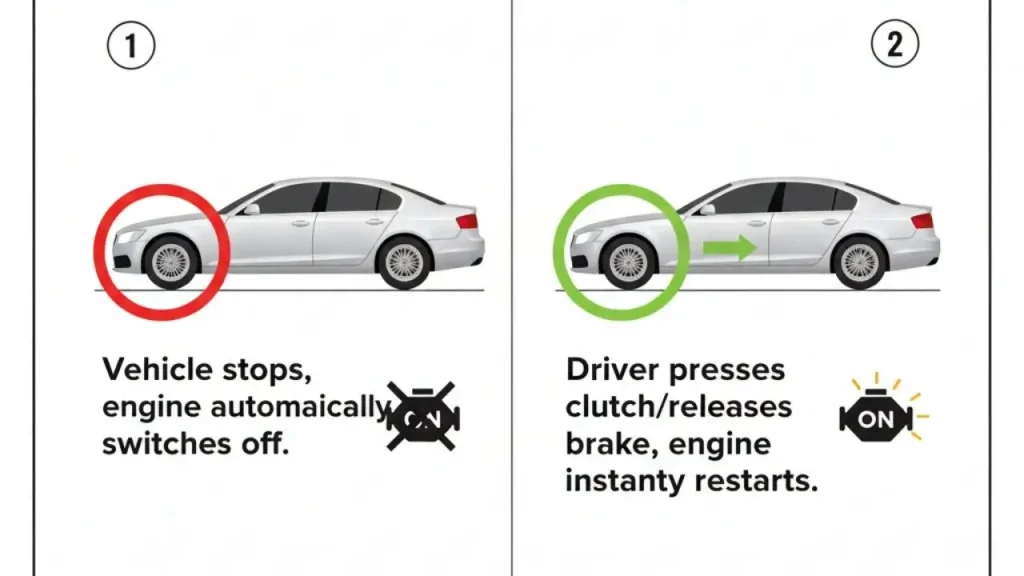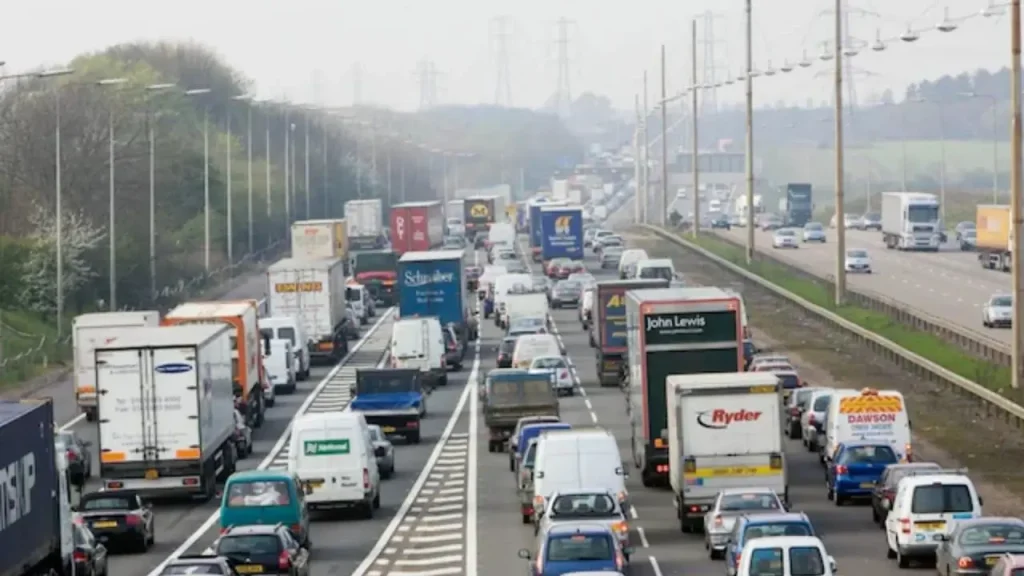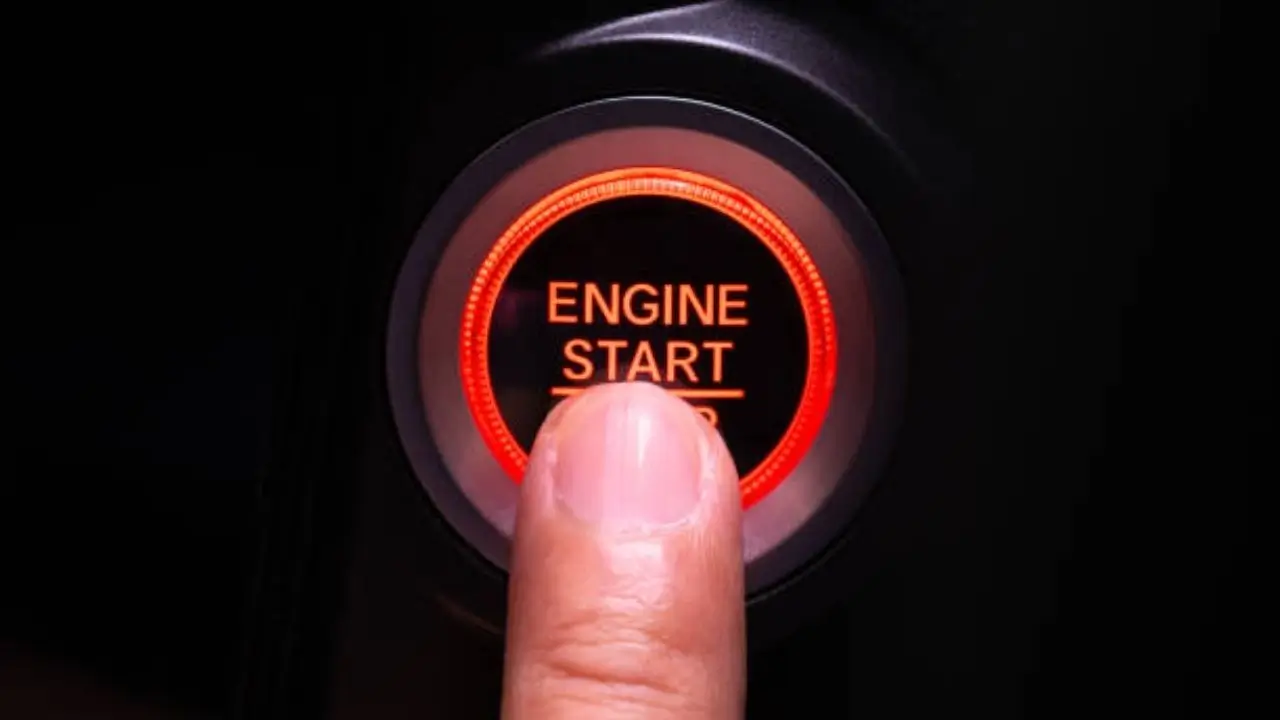Drivers across the United Kingdom could face significant financial penalties for leaving their engines running while stationary, but a standard feature in most modern vehicles offers a simple solution. Understanding how to use the engine start-stop system can help motorists avoid a potential engine idling fine, improve air quality, and conserve fuel during increasingly common traffic jams.

Engine Idling Regulations
| Key Fact | Details |
| The Rule | Drivers must not leave an engine running unnecessarily while stationary. |
| Standard Penalty | A Fixed Penalty Notice (FPN) of £20, rising to £80 in certain zones. Gov.uk |
| Maximum Penalty | Can escalate to £1,000 if the FPN is challenged and lost in a magistrates’ court. |
| Primary Reason | To reduce localised air pollution and protect public health. |
The Law on Engine Idling Explained
Motorists who leave their engines running unnecessarily while their vehicle is parked or stopped in traffic are breaking the law and risk being issued a penalty. According to Rule 123 of the Highway Code, “You MUST NOT leave a vehicle’s engine running unnecessarily while that vehicle is stationary on a public road.” This rule is legally enforceable under the Road Traffic (Vehicle Emissions) (Fixed Penalty) (England) Regulations 2002.
Local authorities have the power to issue a £20 Fixed Penalty Notice (FPN) for this offence. In areas with stricter emissions standards, such as London, this initial fine can increase to £80. While the on-the-spot penalty is modest, failure to pay can lead to prosecution in a magistrates’ court, where the maximum fine can reach £1,000, according to motoring organisation The AA.

“Idling increases the amount of exhaust fumes in the air,” a spokesperson for the Royal Automobile Club (RAC) stated. “These fumes contain a number of harmful gases… which is bad for the environment and for our health.” The primary goal of these regulations is to combat localised air pollution, particularly near schools, hospitals, and in residential areas where vulnerable people are more exposed.
How a Simple Button Can Prevent an Engine Idling Fine
The solution for many drivers is a feature that has become standard in most cars manufactured over the last decade: the automatic start-stop system. This technology is designed to cut fuel consumption and emissions by automatically shutting down the engine when the vehicle is stationary, for example at a traffic light or in a queue of traffic. The engine seamlessly restarts as soon as the driver is ready to move off, typically by lifting their foot from the brake or depressing the clutch.
While the system is automatic, most vehicles have a button—often marked with an ‘A’ encircled by an arrow—that can deactivate it. For the system to help avoid an engine idling fine, drivers must ensure it is active.
“Start-stop systems are an effective way to comply with idling laws without having to manually turn the ignition key every time you stop,” explained Gregory Archer, UK Director at the European clean transport campaign group Transport & Environment. “The technology is specifically designed for these stop-and-go situations and reduces your car’s environmental impact.”
Best Practices for Drivers in Traffic
For vehicles without an automatic start-stop system, the Highway Code guidance implies a manual approach. If you anticipate being stationary for more than a minute, it is advisable to turn off your engine. This not only prevents a potential fine but also saves fuel.
Experts advise drivers to use their judgement. Constantly turning an engine on and off in slow-moving, crawling traffic could cause unnecessary wear on the starter motor and battery. However, in a complete standstill lasting several minutes, switching off the engine is the most sensible course of action.

Furthermore, being stationary in traffic exposes occupants to higher levels of pollution from surrounding vehicles.
“When you are in a traffic jam, the concentration of toxic pollutants inside your car can be significantly higher than outside,” said a representative from Airly, a clean air technology company. “Using the air recirculation button can help reduce your exposure by stopping polluted air from being drawn into the cabin.”
DWP Top-Up Payments Worth £519 Set to Hit Bank Accounts Soon: What You Need to Know
Going on Holiday? DWP’s New PIP Rule Could Cost You—Find Out Why
The enforcement of anti-idling regulations is becoming a higher priority for councils seeking to meet air quality targets. As such, drivers are encouraged to be aware of their vehicle’s features and the law to avoid penalties. Being mindful of engine idling is a small change that contributes to cleaner air and avoids an unnecessary expense.





